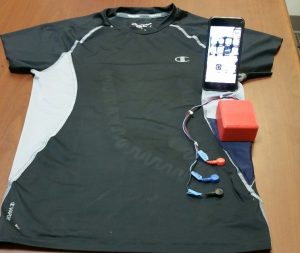It’s nearly impossible to avoid the debate. From politicians and pundit commentary, to dinner table discussions across the United States, the hot topic for the last several years has been the rising cost of health care.
Consider that health care expenditures in the US were $3 trillion in 2014 and are expected to rise by 5.2% annually. Contentious deliberations continue about the reasons for our soaring health care costs and the best ways to lower them. But there’s one thing most people agree on: Preventive care is a more desirable, lower-cost option than patient treatment.
Individual preventive care takes many forms, like eating better, exercising and getting regular medical checkups. But today, the health care industry is incorporating innovative programs designed to take advantage of preventive care. One of those embraces leading-edge technologies to provide insights on patients like never before.
The speed at which medical professionals could get insights on patient health is clearly limited with traditional methods (think loading data into a warehouse and performing analytics on the data “at rest”). To get up-to-the-minute insights, all the health-related data that’s available about a patient ideally needs to be captured and analyzed as it occurs. To accomplish this lofty goal, the health care industry is turning to streaming data and wearables – that is, streaming data software integrated with wearable technology.
Streaming data and wearables boost preventive care potential

When most people think “wearable technology,” they think about popular devices like a Fitbit that tracks the wearer’s activity level, food consumption and sleep. What they might not realize is that the growing use of more sophisticated wearables is set to revolutionize the healthcare industry and turn the tide from patient treatment to preventive care.
As this article about machine learning and wearable medical devices shows, “There aren’t enough health care providers for our aging population, and there’s an urgent need to find new, unconventional ways to care for patients.” By collecting streaming data from devices embedded in wearable technology, health care organizations can capture and analyze data continually as it’s received. This keeps them abreast of situational intelligence (a rise in heart rate, blood pressure, breathing patterns, etc.) as new events take place. Otherwise, these valuable patient vitals could be lost through information lag.
Being able to detect changes to a patient’s vitals in real time makes it possible to catch problems before they escalate, reducing or potentially eliminating the need for lengthy, costly hospital stays. Capturing these vitals immediately is similar to giving your doctor the chance to do an instant checkup, whenever you happen to need it.
University researchers examine data streaming from sensors in t-shirts
Consider the research being conducted by the Advanced Self-Powered Systems of Integrated Sensors and Technologies (ASSIST) Nanosystems Engineering Research Center (NERC) – which is funded by the National Science Foundation and led by North Carolina State University (NC State). The ASSIST NERC provides a great example of streaming health care data used in conjunction with wearable technology. One platform ASSIST is developing is a wearable t-shirt for asthma patients.
“Our collaborations with SAS are allowing us to understand the challenges of data management with this type of healthcare platform. Moreover, we’re performing a stress test that enables more advanced shirt-based prototypes to be developed.” (Dr. Jesse Jur, Assistant Professor of Textile Engineering, Chemistry & Science in the College of Textiles at NC State. Jur is the technology thrust leader for “Wearability and Data” in the ASSIST NERC.)
Through sensors embedded in the t-shirt, streaming data moves from a sensor node to a smartphone aggregator and then to the cloud. As a result, the movements, heart rate, respiratory rate and blood oxygenation of asthma sufferers will be tracked, along with the wheezing sounds in their lungs. Environmental factors (think air quality) that could trigger an attack will also be factored into the study. When a patient reaches a certain threshold, they or their doctor can immediately be warned of the abnormality. And it’s all done by using streaming data and wearables technology.
By streaming and analyzing this data, the ASSIST NERC will be able to distinguish between “noise” that comes from the t-shirt versus signals that should be considered actual warning signs. Analyzing for patterns of interest, applying business rules to the data, and scoring with advanced analytic models in real time will allow wearable technology providers to make correlations between a person’s health and environmental factors. All this is essential to the patient’s preventive care success.
“One of the big challenges of wearable systems is to provide real-time processing of this complex data in order to generate useful warnings to the user as well as the medical practitioner.” (Dr. Edgar Lobaton is Assistant Professor in the Department of Electrical and Computer Engineering at NC State University. Lobaton works in pattern recognition and machine learning, and is affiliated with the ASSIST NERC.)
The future of streaming data and wearables
Health care cost issues in the US are multilayered and could take many reforms to stabilize. But streaming data and wearables technologies will continue to be a piece of the puzzle, both from a cost savings perspective and for patients who expect a better health care experience. Whether it’s an elder without any family members nearby or a child who doesn’t yet know what feels “normal,” wearable technology and streaming data will be an ally – and a champion – for us all.
– SAS provides support to NC State as an industry member of the ASSIST Center.
